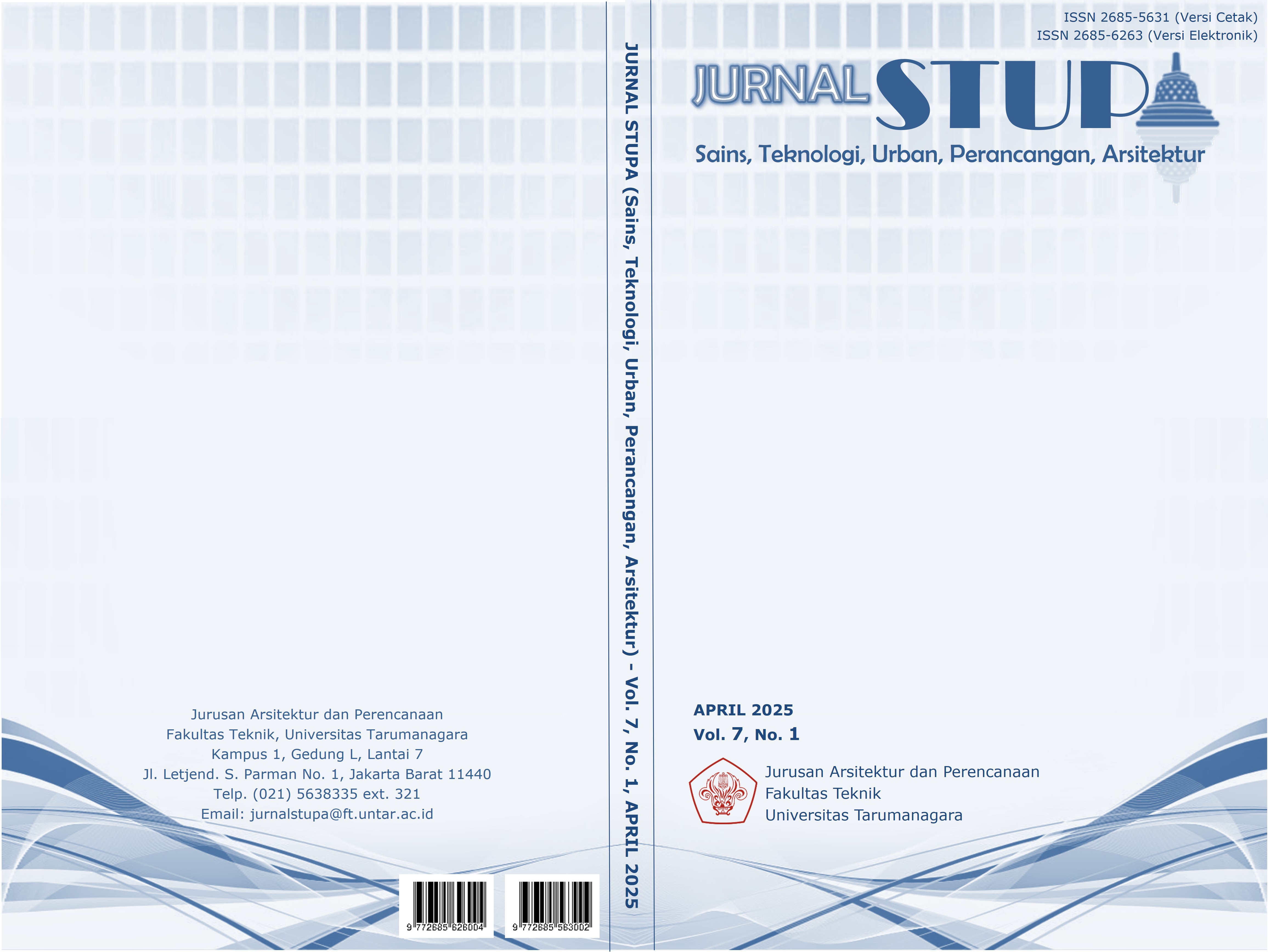ANALISIS KONEKTIVITAS SIMPANG TEMU LEBAK BULUS DALAM MENGHUBUNGKAN STASIUN MRT LEBAK BULUS TERHADAP JUMLAH PENGUNJUNG MALL POINS
Main Article Content
Abstract
Jakarta, as one of the largest metropolitan cities in Indonesia, continues to improve its public transportation system to support the growing mobility needs of its population. One of the key initiatives in this effort is the construction of Simpang Temu Lebak Bulus, which serves as a connector between Lebak Bulus MRT Station and Poins Mall. This project is a collaboration between PT MRT Jakarta, as the MRT operator, and PT Menara Prambanan, the developer of Poins Mall. The strategic location of Poins Mall, near the transit-oriented area of Lebak Bulus, makes it a vital point in the existing public transportation network. Simpang Temu Lebak Bulus is designed to provide convenient pedestrian access, featuring a safe and comfortable pedestrian bridge. This infrastructure is expected not only to enhance the convenience of public transportation users but also to drive local economic growth by attracting more visitors to Poins Mall. This research aims to analyze the impact of Simpang Temu Lebak Bulus on the number of visitors to Poins Mall. Traffic flow analysis methods will be used to measure the percentage of pedestrians passing through and their destinations, as well as to evaluate the effectiveness of the built infrastructure. The results of this study are expected to provide valuable recommendations for stakeholders, including the government and developers, in efforts to increase the number of visitors to Poins Mall and improve public transportation infrastructure in Jakarta. Therefore, Simpang Temu Lebak Bulus can significantly contribute to improving the quality of life of the community and the development of the surrounding area.
Keywords: Connectivity; Lebak Bulus MRT Station; Pedestrian Flow; Poins Mall; Simpang Temu Lebak Bulus
Abstrak
Jakarta sebagai salah satu kota metropolitan terbesar di Indonesia, terus berupaya meningkatkan sistem transportasi publiknya untuk mendukung mobilitas masyarakat yang semakin meningkat. Salah satu inisiatif penting dalam hal ini adalah pembangunan Simpang Temu Lebak Bulus, yang berfungsi sebagai penghubung antara Stasiun MRT Lebak Bulus dan Mal Poins. Proyek ini merupakan hasil kolaborasi antara PT MRT Jakarta, sebagai pengelola MRT, dan PT Menara Prambanan, yang bertindak sebagai pengembang Mal Poins. Lokasi Mal Poins yang strategis, dekat dengan kawasan berorientasi transit Lebak Bulus, menjadikannya titik penting dalam jaringan transportasi publik yang ada. Simpang Temu Lebak Bulus dirancang untuk memberikan kemudahan akses bagi pejalan kaki, dengan menyediakan jembatan penyeberangan yang aman dan nyaman. Infrastruktur ini diharapkan tidak hanya meningkatkan kenyamanan pengguna transportasi publik, tetapi juga mendorong pertumbuhan ekonomi lokal dengan menarik lebih banyak pengunjung ke Mal Poins. Penelitian ini bertujuan untuk menganalisis seberapa besar pengaruh Simpang Temu Lebak Bulus terhadap jumlah pengunjung Mal Poins. Metode penghitungan arus lalu lintas akan digunakan untuk mengukur persentase pejalan kaki yang melintas dan tujuan mereka, serta untuk mengevaluasi efektivitas infrastruktur yang telah dibangun. Hasil dari penelitian ini diharapkan dapat memberikan rekomendasi yang berguna bagi pihak terkait, termasuk pemerintah dan pengembang, dalam upaya meningkatkan jumlah pengunjung Mal Poins dan memperbaiki infrastruktur transportasi publik di Jakarta. Dengan demikian, Simpang Temu Lebak Bulus dapat berkontribusi secara signifikan terhadap peningkatan kualitas hidup masyarakat dan pengembangan kawasan sekitarnya.
Article Details

This work is licensed under a Creative Commons Attribution-NonCommercial-ShareAlike 4.0 International License.
This work is licensed under a Jurnal Sains, Teknologi, Urban, Perancangan, Arsitektur/ STUPA Creative Commons Attribution-NonCommercial-ShareAlike 4.0 International LicenseReferences
Benjamin, J. D., Boyle, G. W., & Sirmans, C. F. (1990). Retail Leasing: The Landlord's Perspective. Journal of Real Estate Research.
Bloch, P. H., Ridgway, N. M., & Dawson, S. A. (1994). The Shopping Mall as Consumer Habitat. Journal of Retailing.
Brown, C., & Redfearn, C. (2011). Strata Title Property Rights: Private Governance of Multi-owned Properties. Journal of Property Research.
Carmo, L. P. (2020). Multimodal Transport Hubs, Good Practice Guidelines.
Duncan, W. (2005). The Legal and Economic Impact of Strata Titles on Retail Management. Property Law Journal.
Eppli, M. J., & Benjamin, J. D. (1994). The Evolution of Shopping Center Research: A Review and Analysis. Journal of Real Estate Research.
Fruin, J. J. (1971). Pedestrian Planning and Design.
Geltner, D., & Miller, N. G. (2001). Commercial Real Estate Analysis and Investments. South-Western Publishing.
Hair, J. F., et al. (2019). Multivariate Data Analysis.
Jones, P. &. (2009). Link & Place: A Guide to Street Planning and Design.
Jr, F. (2013). Survey Research Methods.
Levy, M., & Weitz, B. A. (2012). Retailing Management. McGraw-Hill.
Phillips, M. (2020). The days of long-term retail leases may be over. The Real Deal.
Pushkarev, B. S. (1975). Urban Space for Pedestrians.
Rodrigue, J.P. (2020). The Geography of Transport Systems.
Roulac, S. E. (1996). Strategic Real Estate Framework: Processes, Choices, and Influences. Journal of Real Estate Research.
The Wall Street Journal. (2020). Flexible



